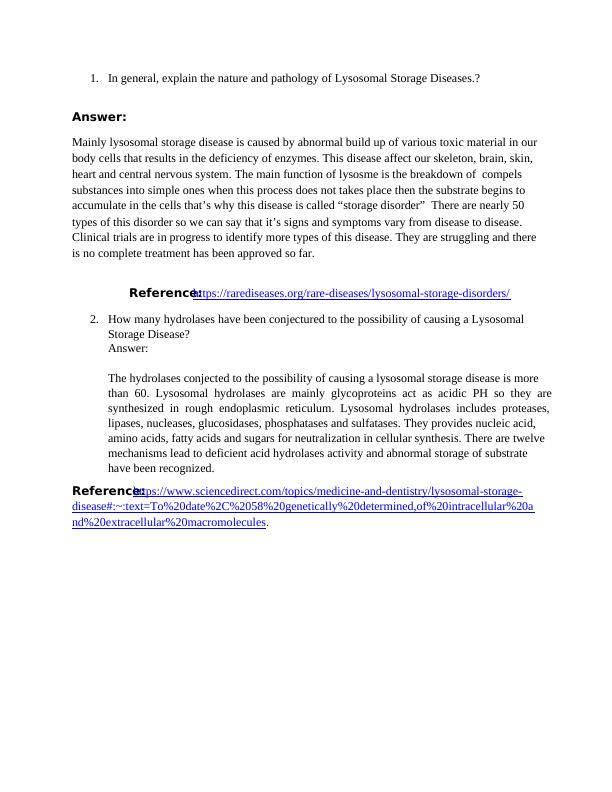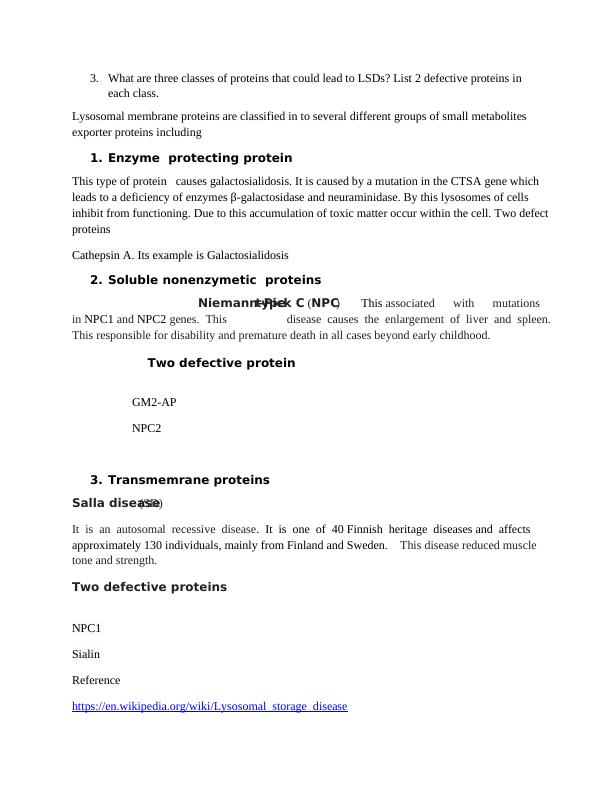(PDF) Lysosomal Storage Diseases
Added on 2021-11-16
5 Pages1267 Words70 Views
End of preview
Want to access all the pages? Upload your documents or become a member.
Phenylketonuria (PKU) - Overview, Prevalence, Genetic Mutation, Clinical Symptoms, Diagnosis and Nutritional Management
|7
|1717
|399
Alpha-Mannosidosis: Research, Diagnosis, Treatment, and Policy
|9
|2142
|174
Niemann-Pick Type A: Causes, Symptoms, Diagnosis, and Treatment
|7
|1810
|94
Galactosemia Review
|6
|2889
|89
(PDF) Protein Synthesis - Assignment
|4
|696
|211
FUMARASE DEFICIENCEY.
|8
|1361
|5

